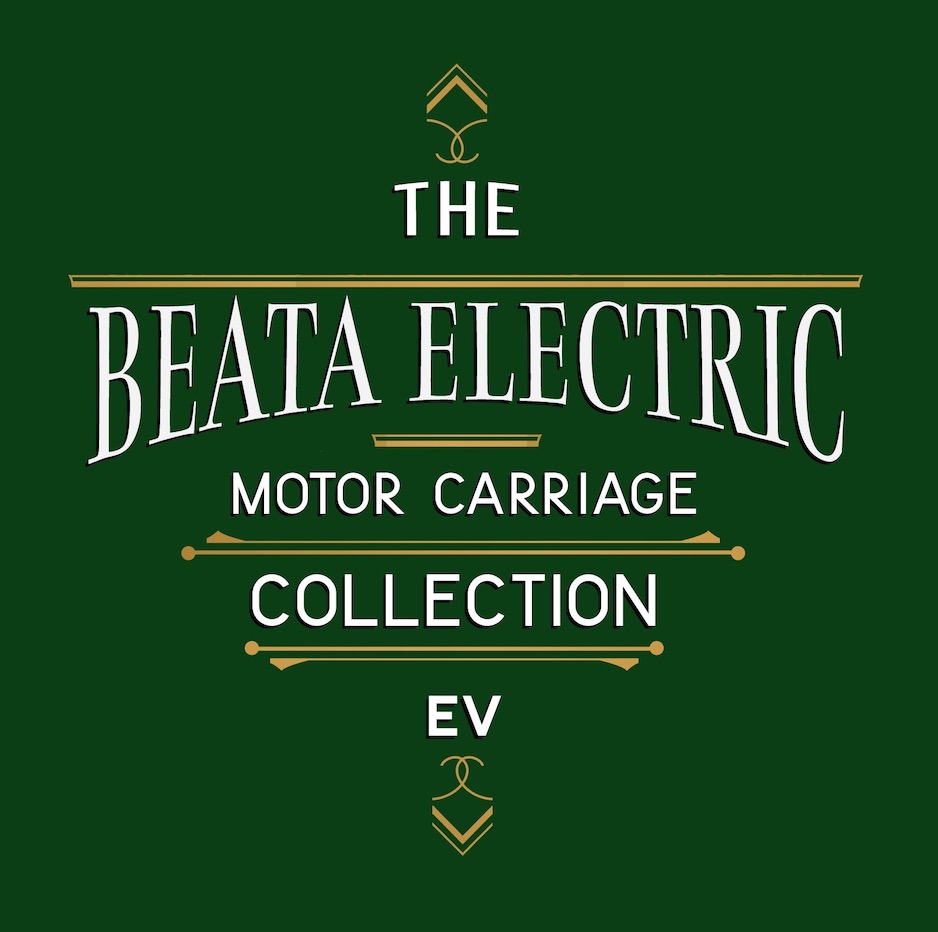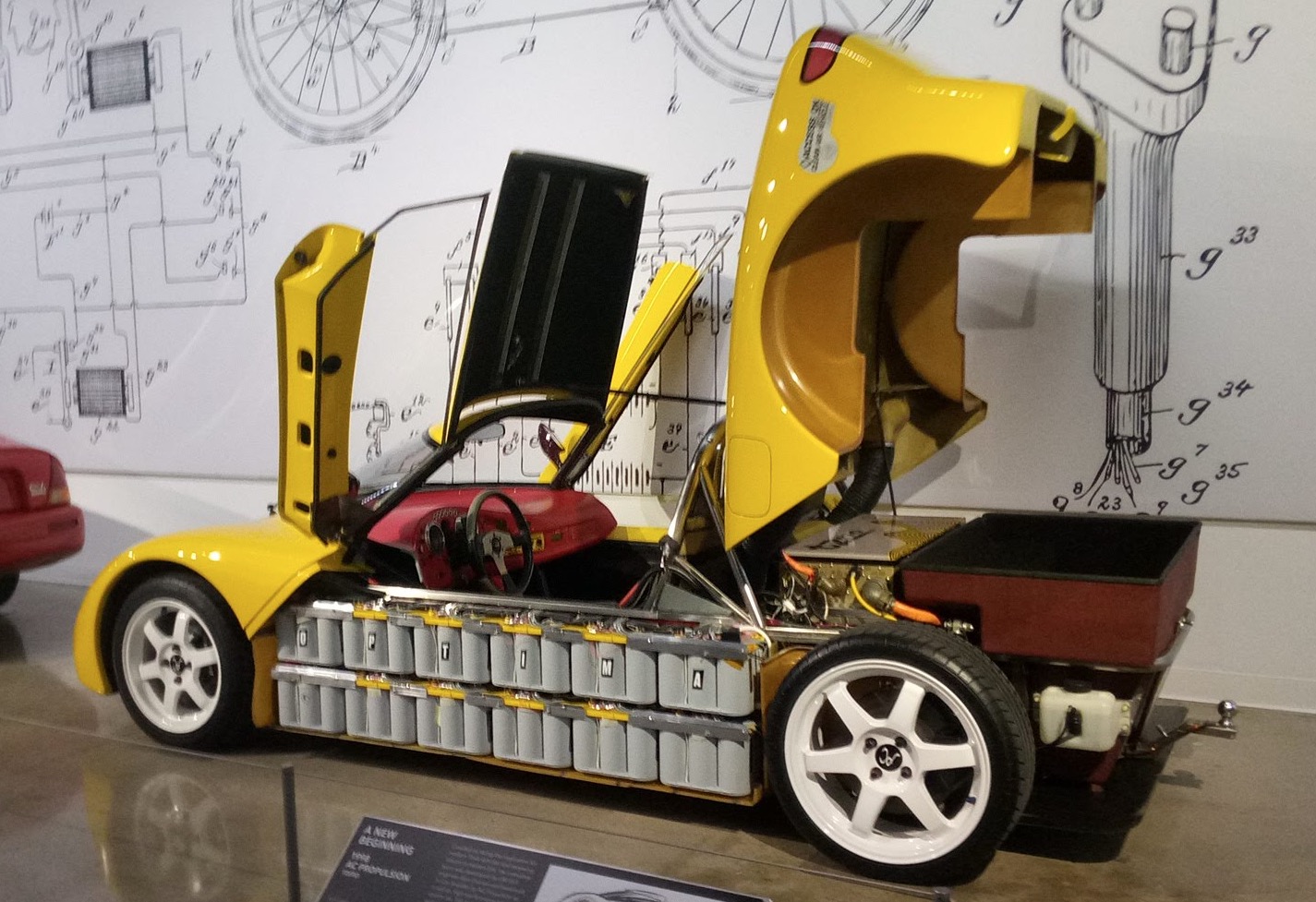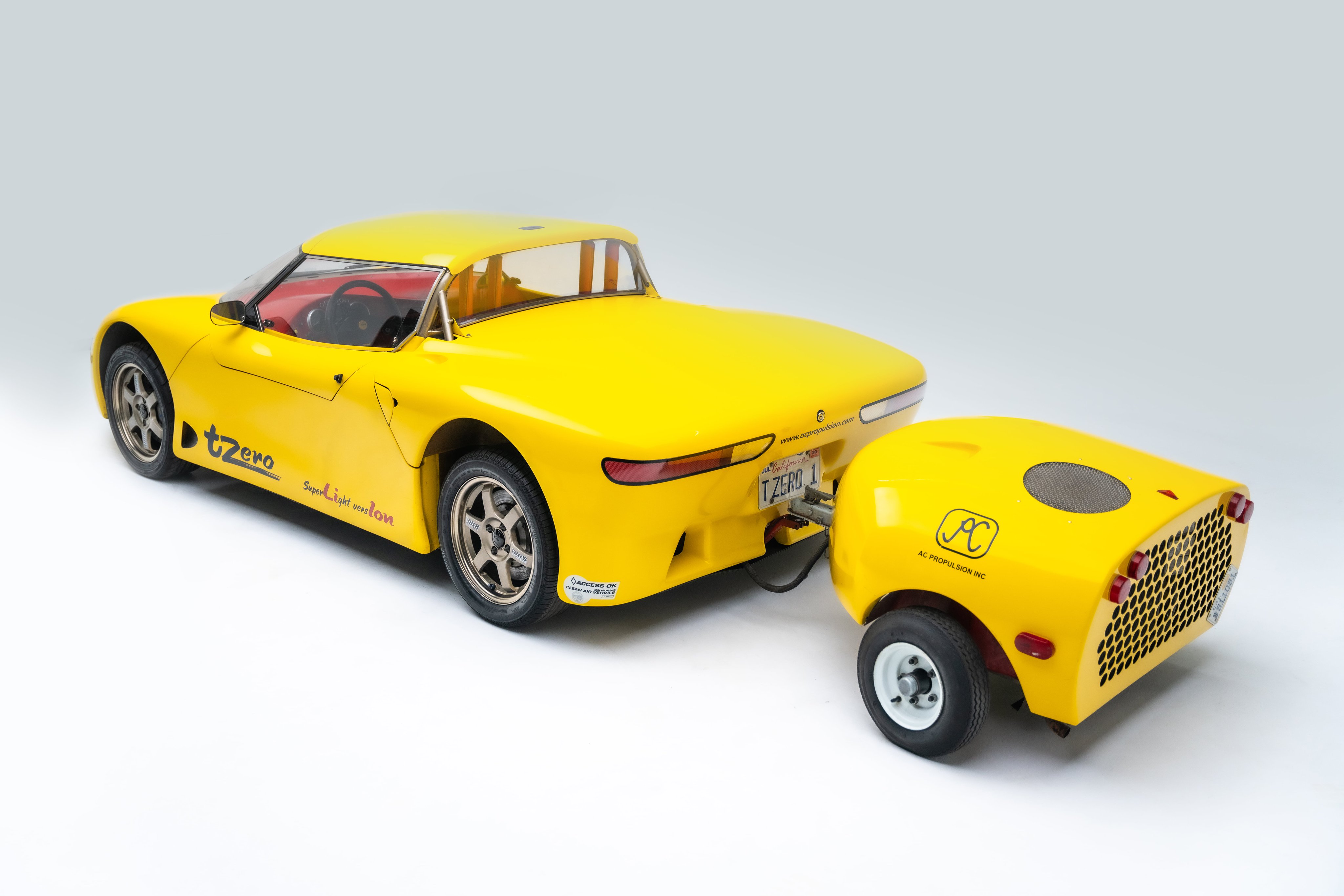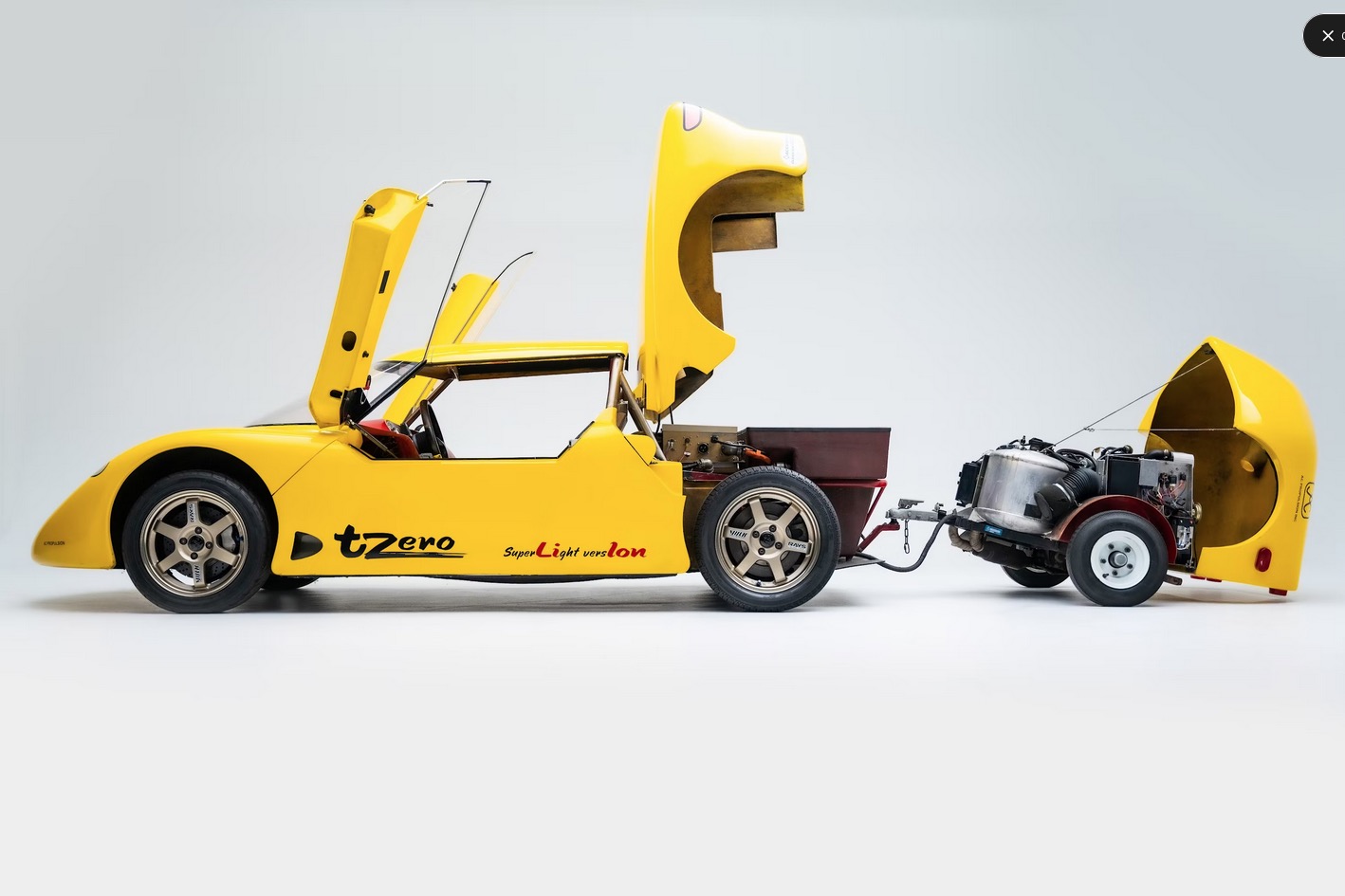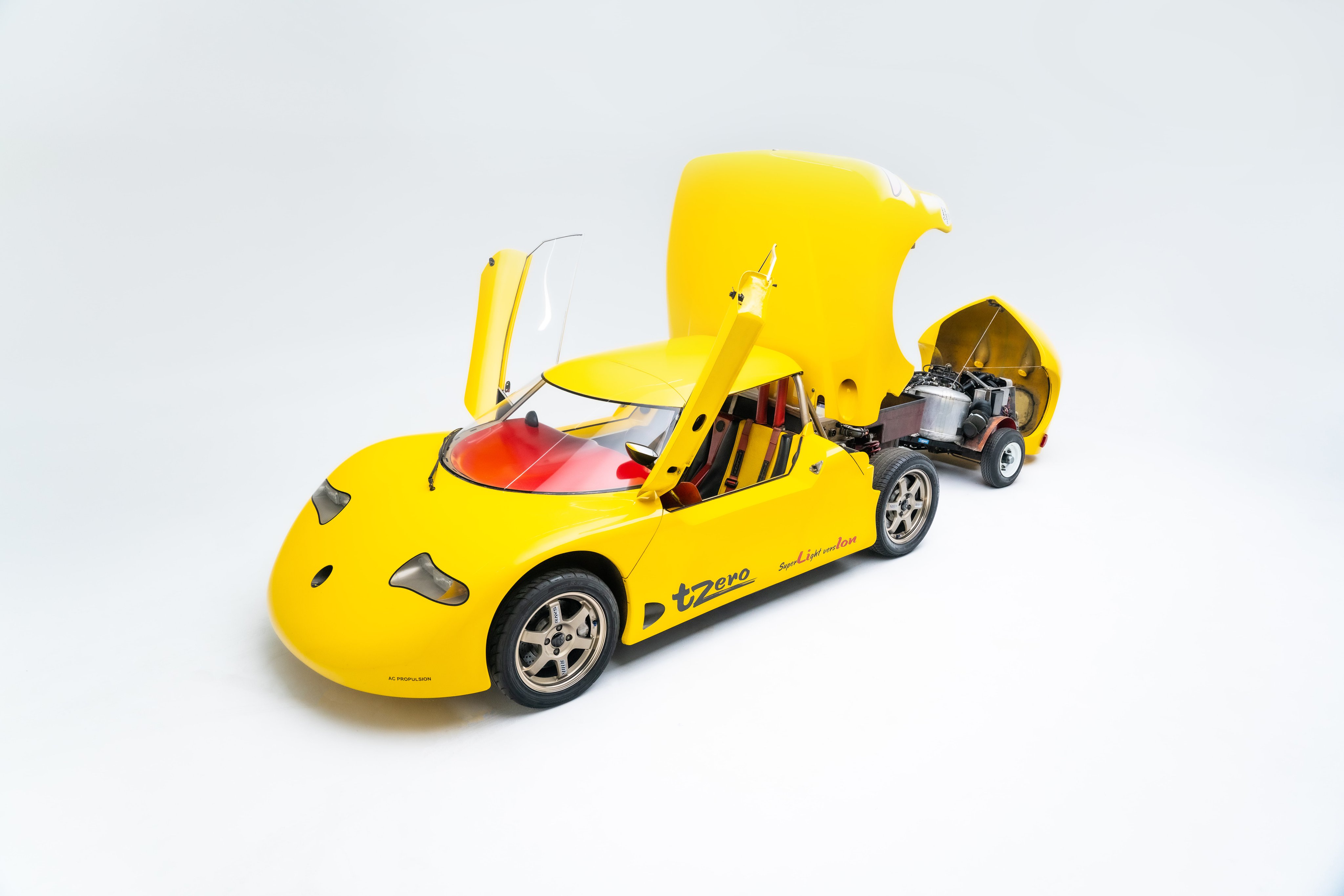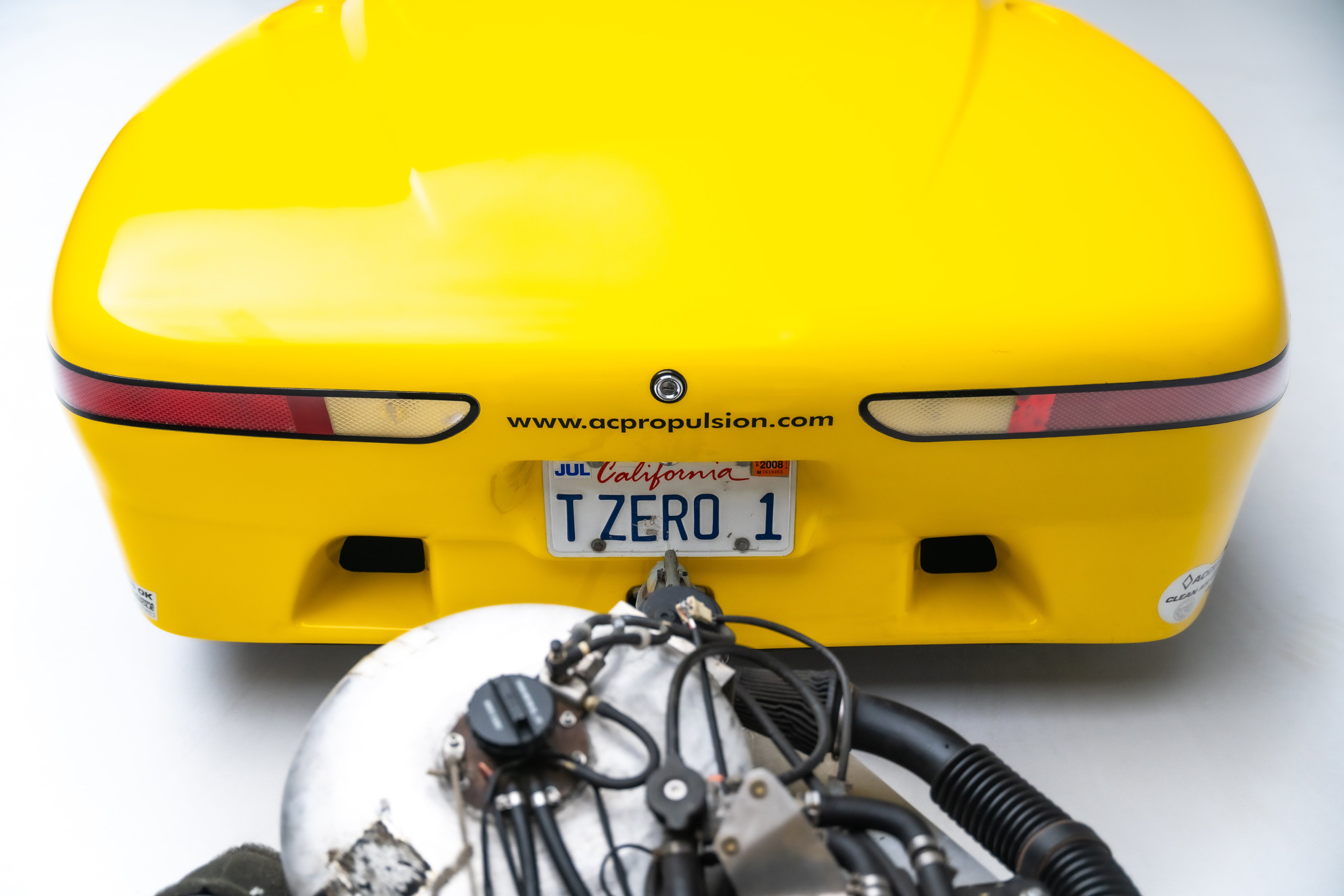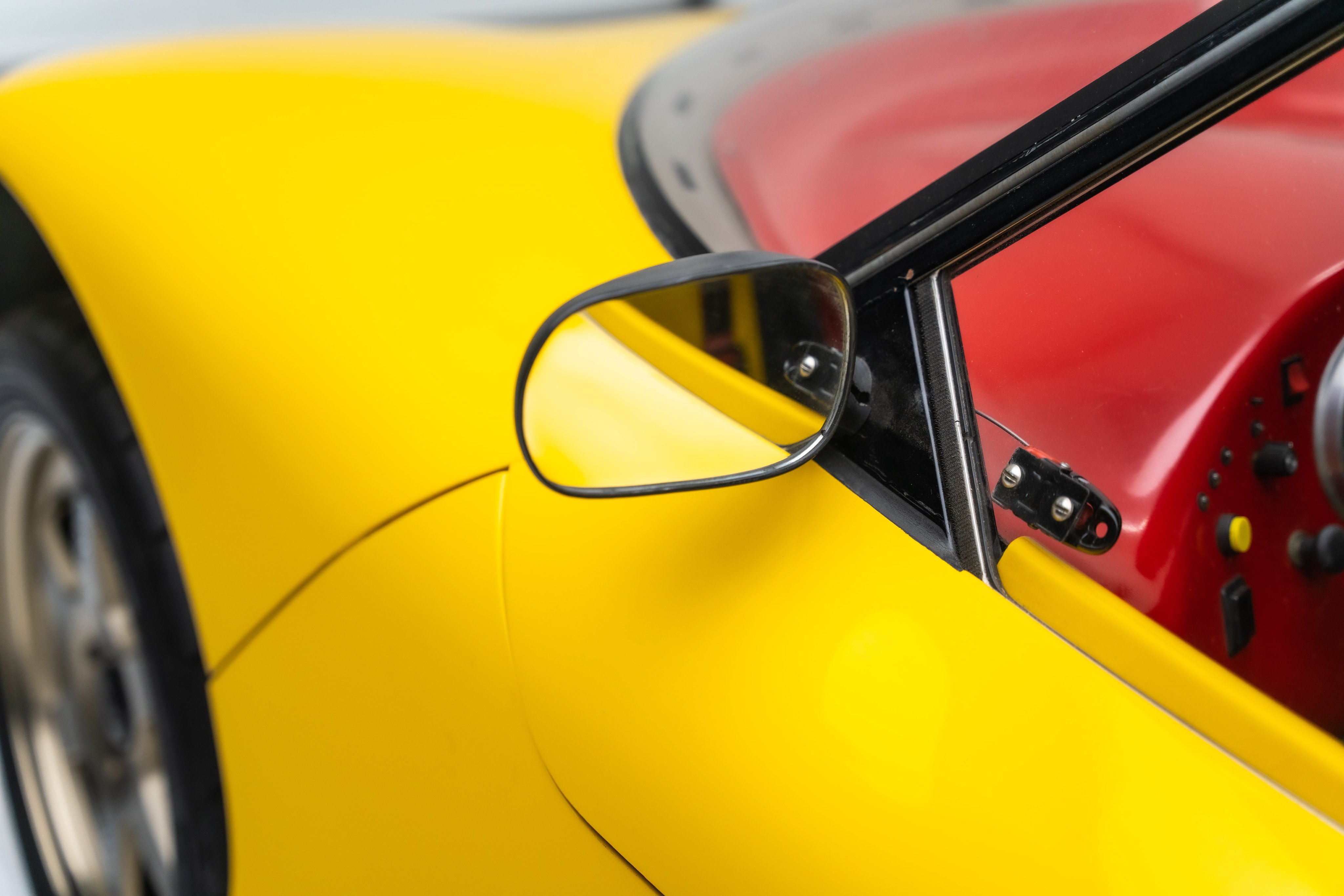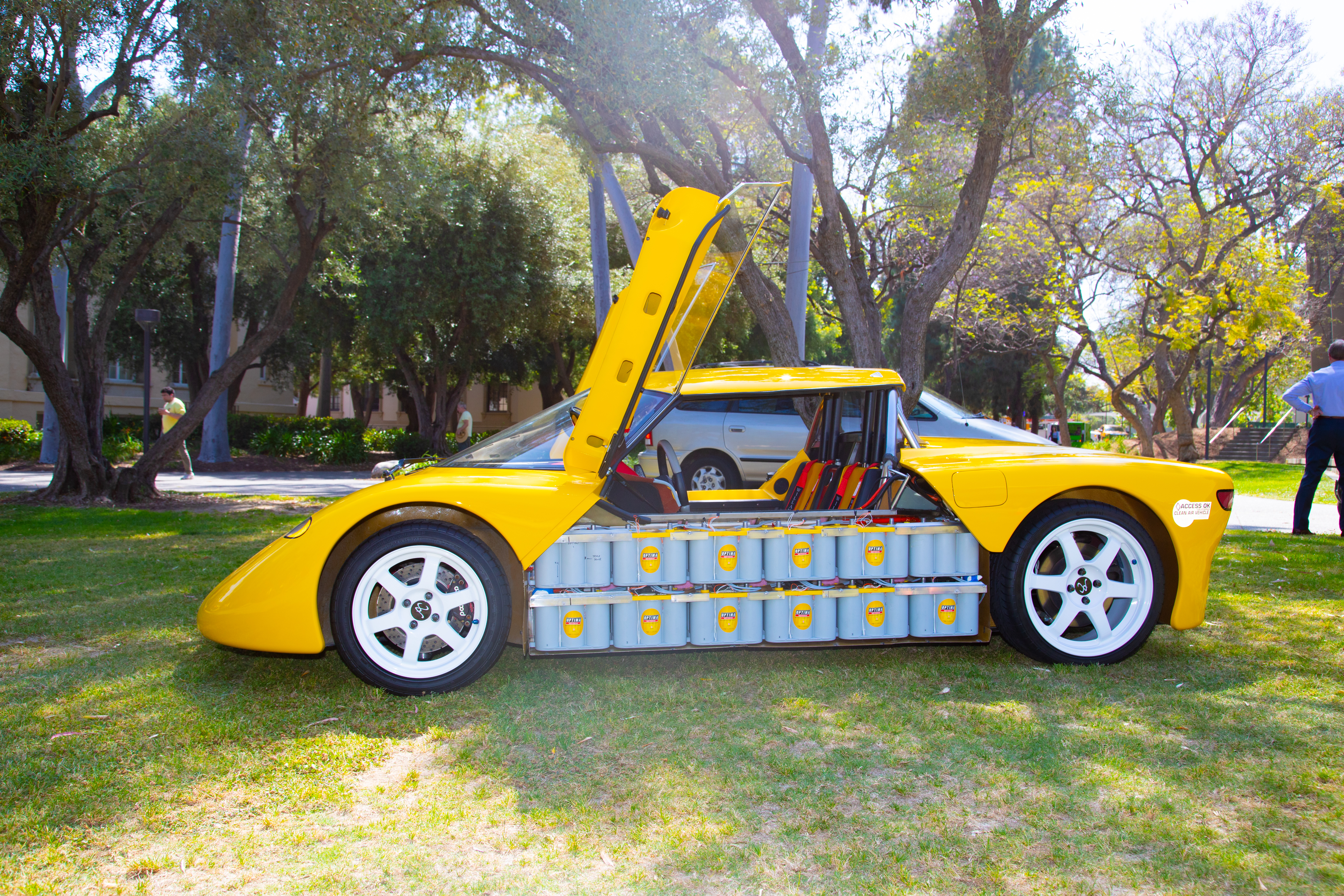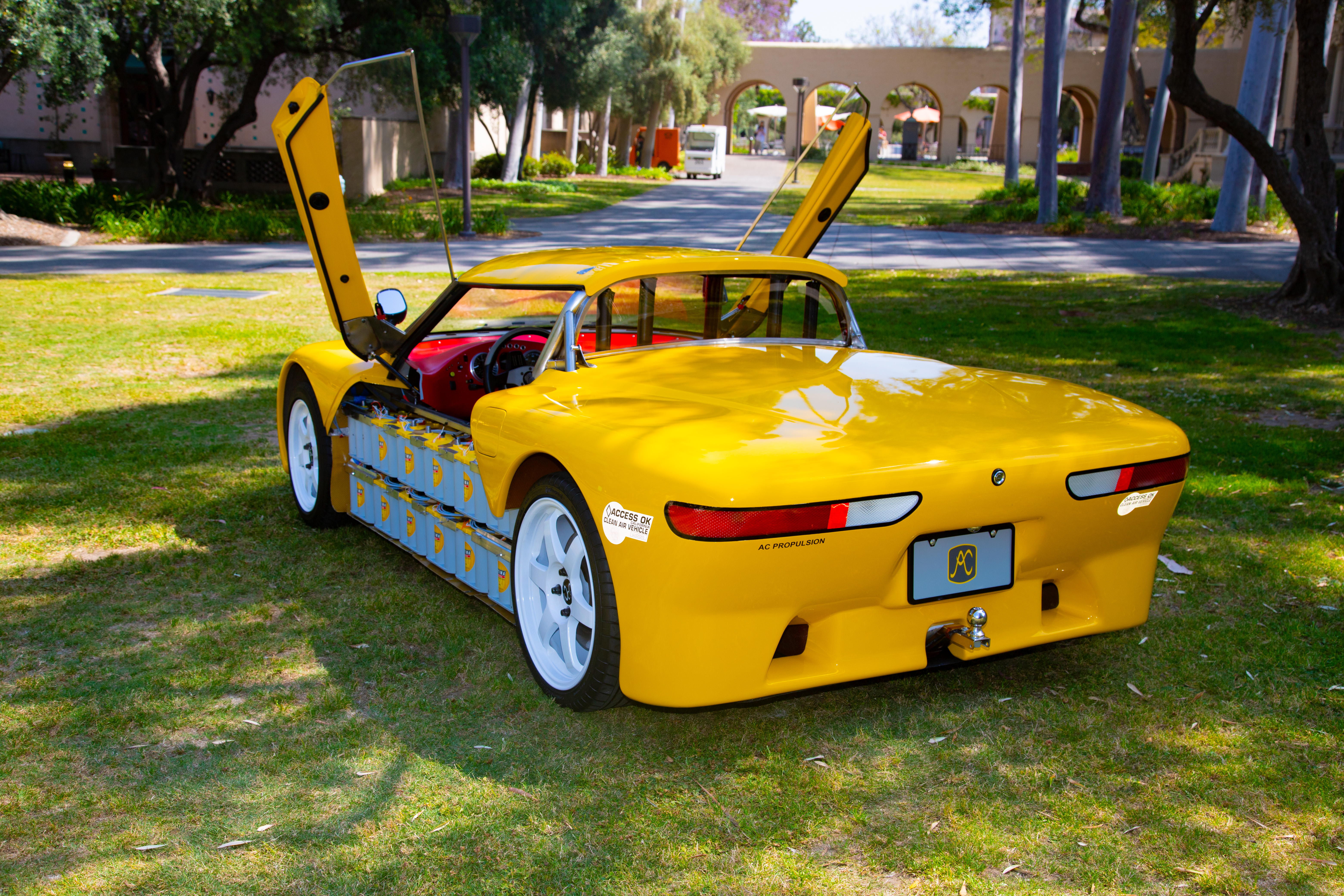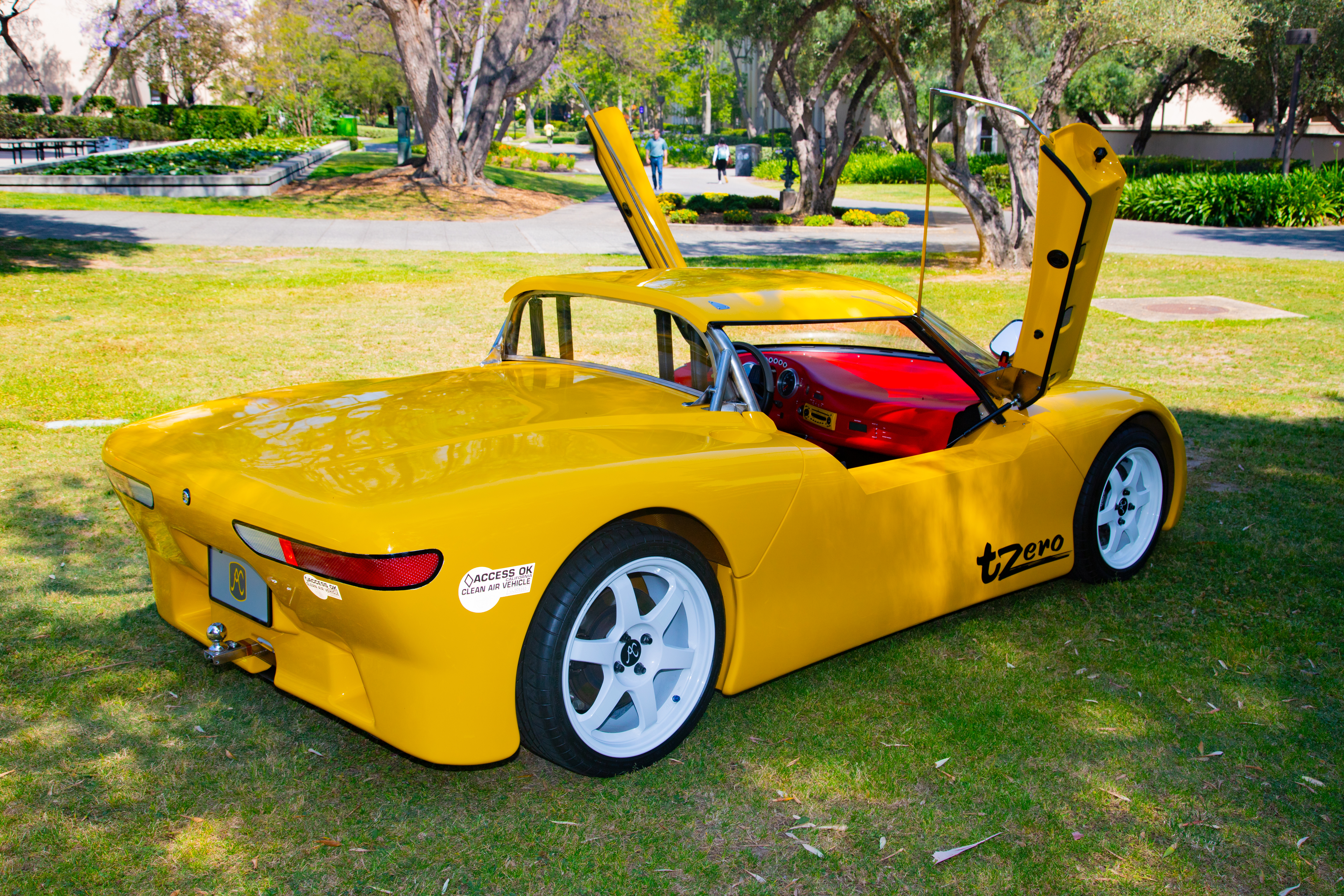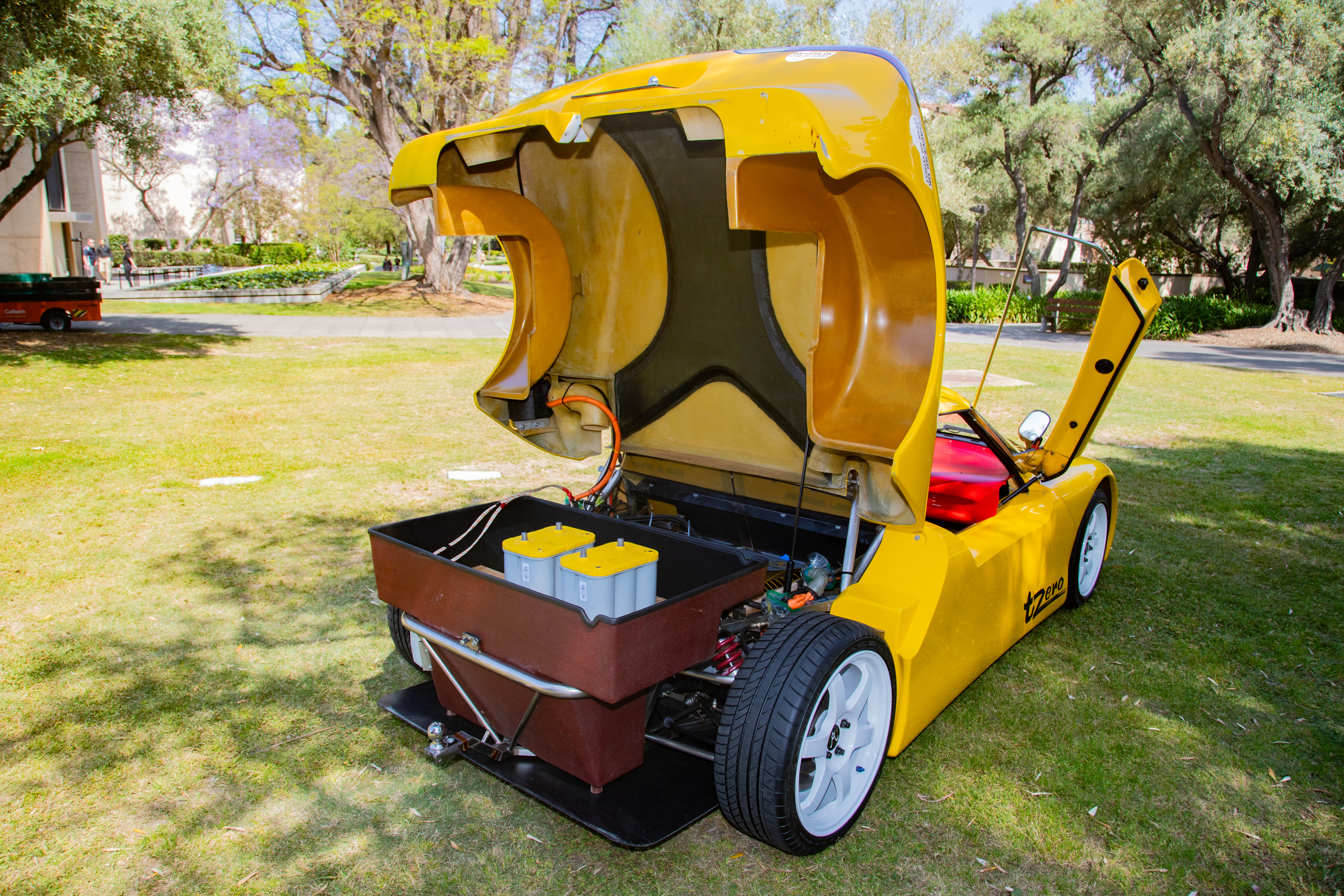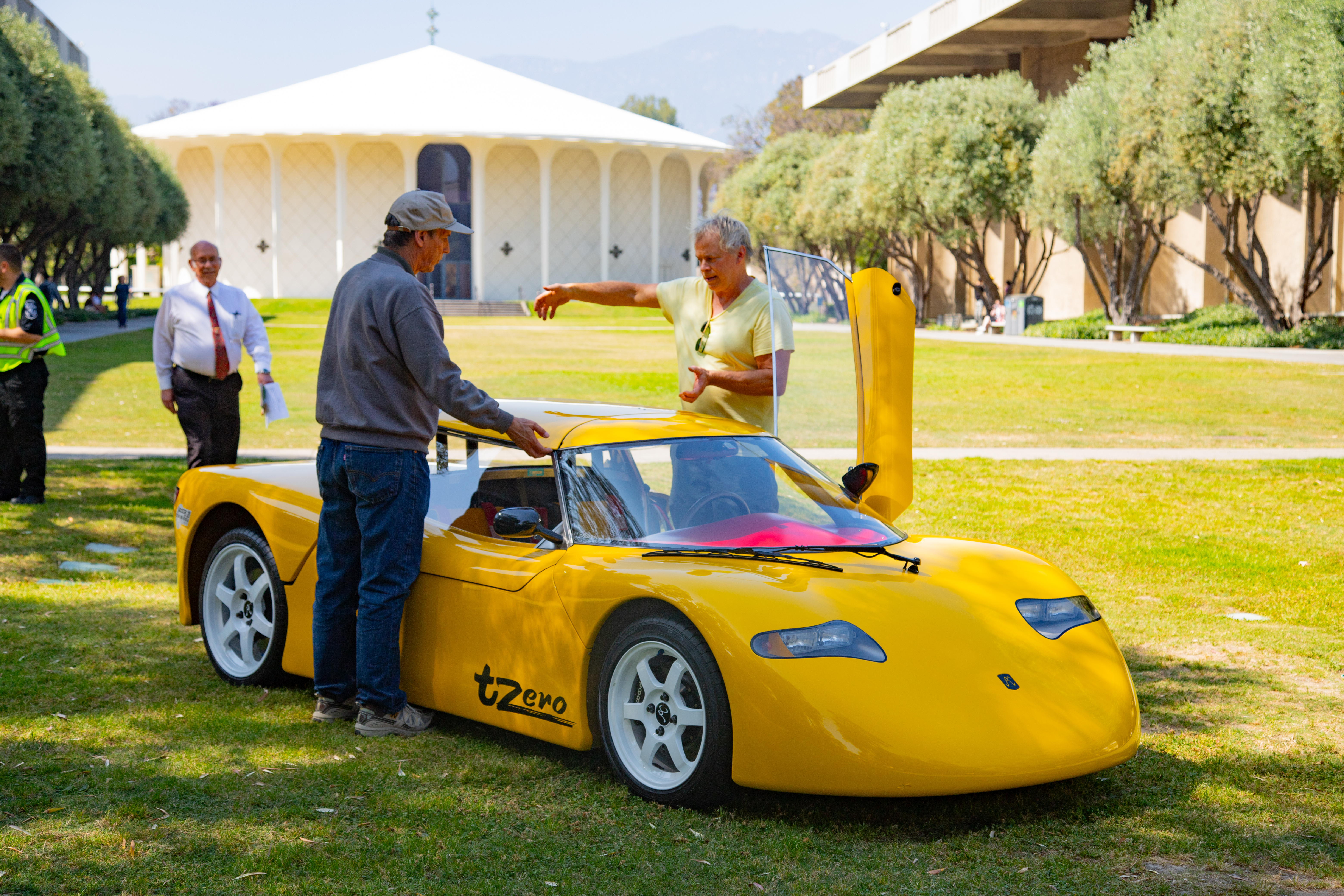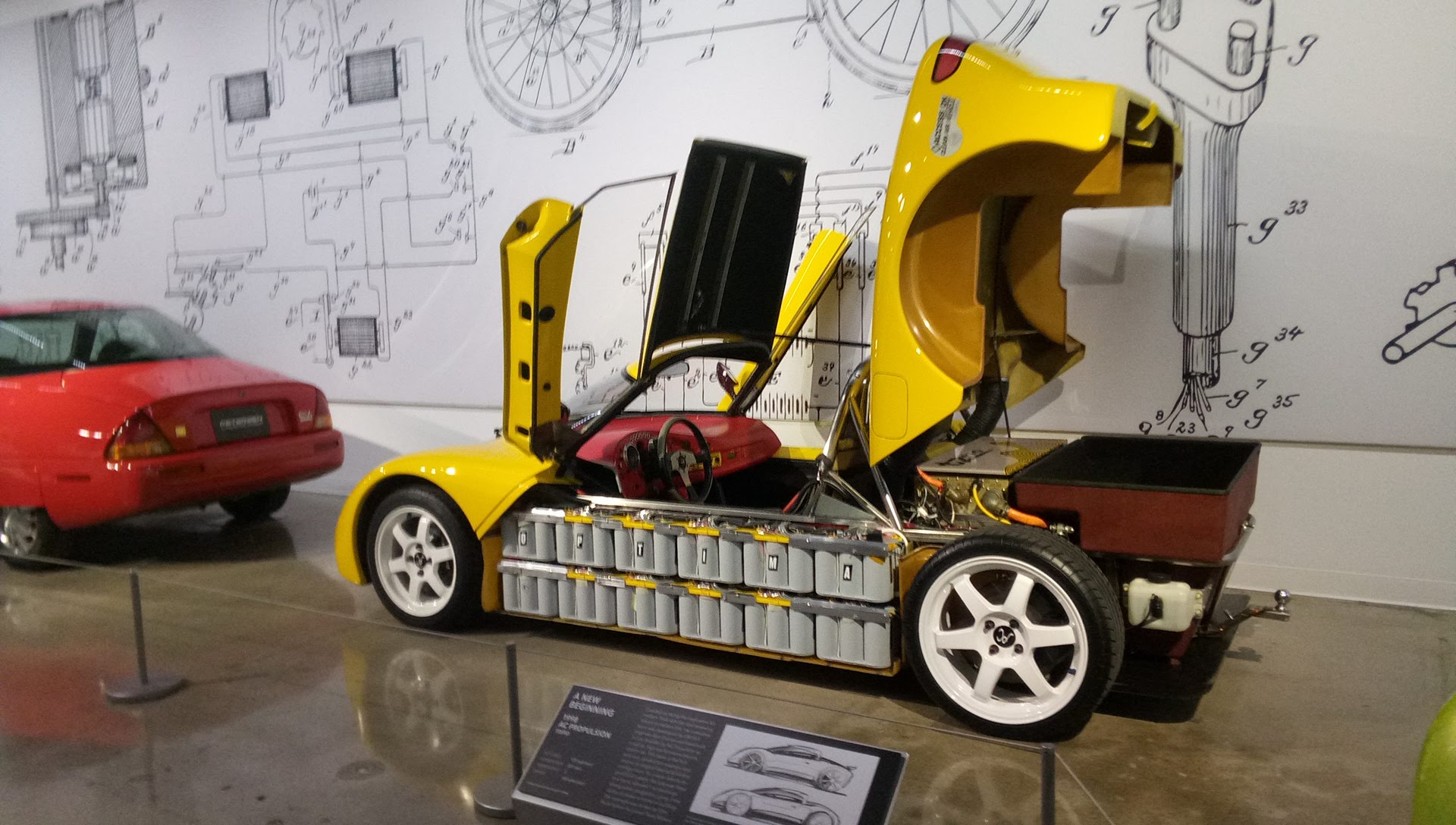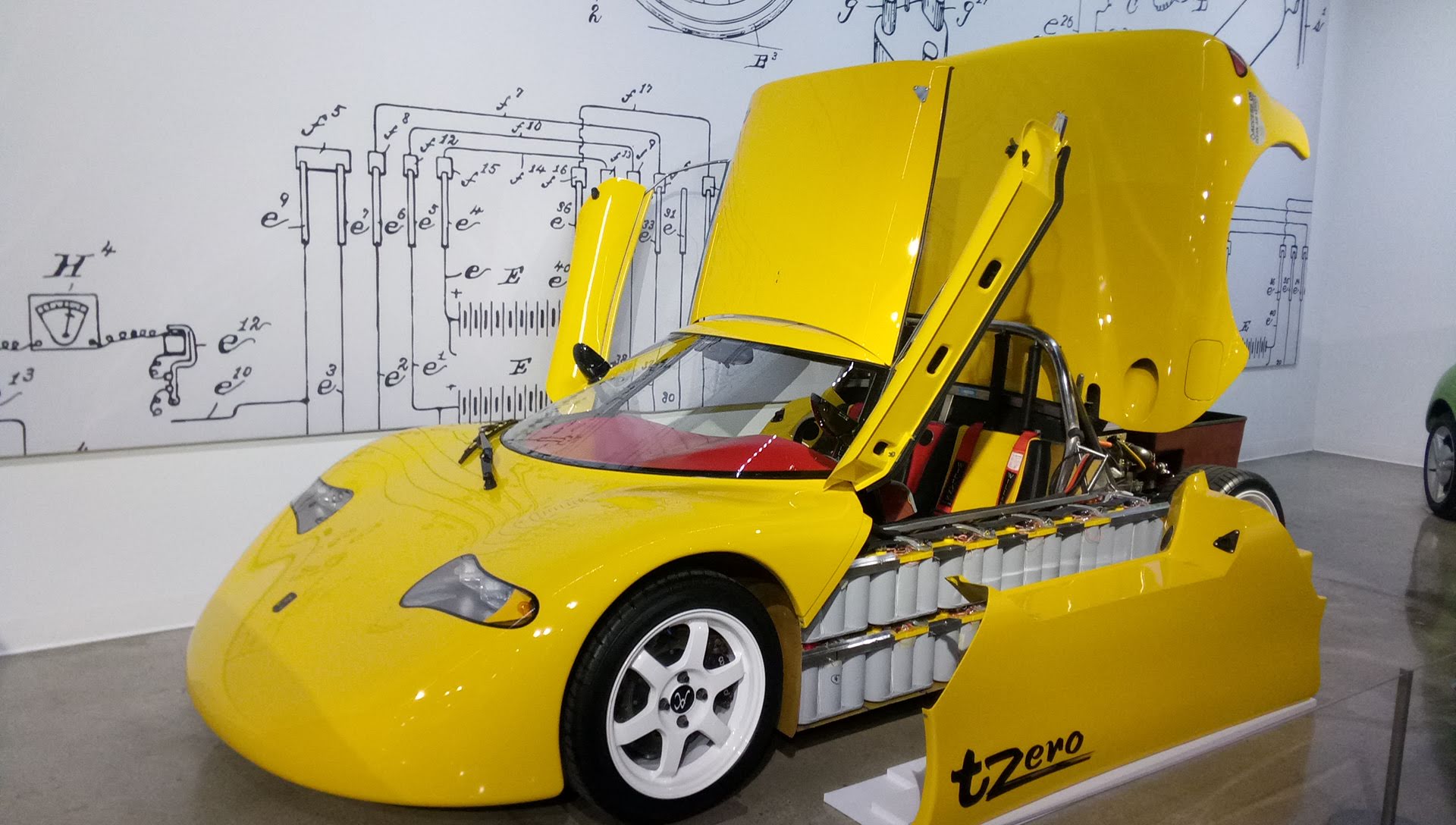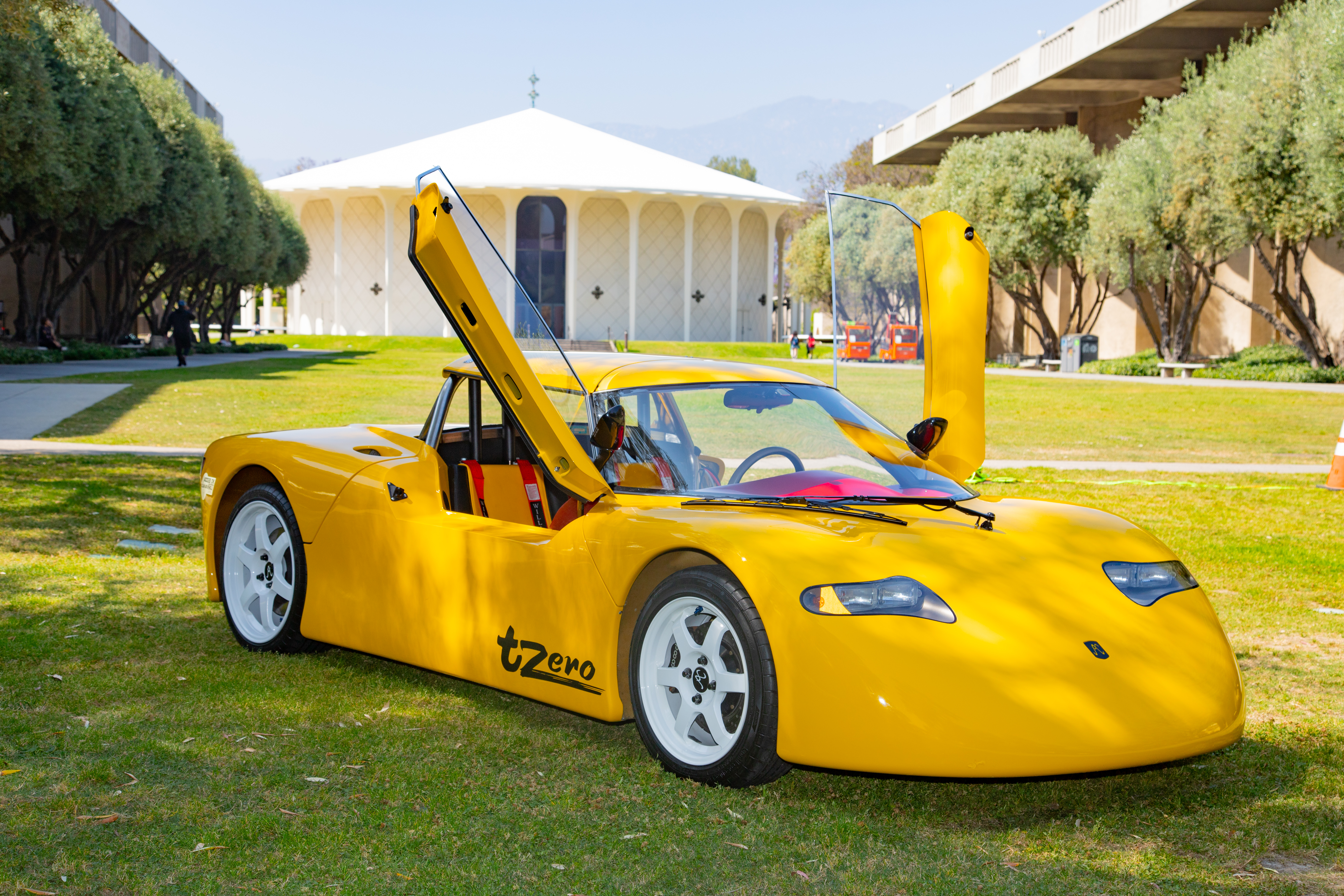
1996 AC Propulsion tZero Prototype BEV
" ACP tZero "
---> Electric Vehicle <---
Designed by AC Propulsion & Alan Cocconi
===
Vehicle Description
tZero development and history
(Caltech Engineering Lecture Series)
Over three decades ago, a dream was born – that electric vehicles
could provide a driving experience that would ultimately
surpass the best of gasoline-powered vehicles. It was envisioned
that this technology could ultimately replace combustion-
powered vehicles leading to a carbon-free future where all transport-
related emissions were completely eliminated. It is upon this ethos
that Alan Cocconi (Caltech BS ‘80) and Wally Rippel
(Caltech BS ‘68) founded AC Propulsion (ACP) in March of 1992;
Cocconi was chief engineer and Rippel was president.
ACP’s first product, designed that year, was a 100 kW drive and
recharge system – the AC100 (see 'eCivic' pages herein). It
consisted of an insulated-gate bipolar transistor (IGBT)-based power
electronics unit (PEU) and a custom-designed
induction motor.
One of the AC100’s key features was an integrated recharge
system where the inverter and motor, in addition to
providing up to 100 kW of drive power, provided up to 19 kW
recharge power using standard AC utility power as the input. This
technology derived from work originally carried out
by Rippel at JPL and later improved by Cocconi in connection with
the GM Impact. The effective cost of the integrated recharge
was about a tenth that of conventional. The new recharge
technology, termed “Reductive Charging” provides “V2G” and “V2X” –
where battery energy is controllably returned to the electric
utility for grid stability or is available as AC power for external use.
EVs equipped with V2G can provide critical support to the
power grid at times of peak demand or limited supply. As such, the
V2G technology can transform EVs from a
“utility liability” to a “utility asset.”
By 1994, a new generation of IGBTs was in production. This
enabled ACP to upgrade performance of the AC100 without having
to increase the physical size of either the Power Electronics
Unit (PEU) or the induction motor. By year’s end, ACP had designed
and fabricated a prototype AC150 – where peak shaft power
was now 150 kW (200 hp). ACP’s business model was to work with
major car companies – to sell EV drive systems, and to pioneer
in creating improved EV technology. Car companies showed
limited interest, especially after 1999 when GM and others
backed away from EVs.
Cocconi and ACP’s second president, Tom
Gage, realized that something dramatic would be needed to
rekindle the post-Impact enthusiasm. In 1995, ACP became aware
of a light-weight, aerodynamic, hand-built sports car – the
Piontek Sportech. Concluding that it would be a good platform for
an electrified sports car which could showcase the AC150
drive system, a Sportech was purchased along with rights for EV
use. By year’s end, a prototype conversion was complete. The car
was aptly named the “tZero” which derives from t_0, the
mathematical symbol for a starting point in time. Three “production”
vehicles were subsequently built between 1996 and
2003 using AC165 drive systems (AC150 upgrades) and a
Kevlar and carbon fiber-reinforced body built over a custom
reinforced stainless steel space frame. Each had
numerous improvements beyond the original prototype, including
an anti-skid feature where sensed lateral acceleration was
used to limit regenerative braking. Acceleration was zero to sixty in
4.17 seconds and range was approximately 100 miles. The
car pointed to a future history of the tZero where high-performance
and clean air could join forces. Ironically, while motivating
considerable interest among engineers, scientists and celebrities,
there was little traction within auto companies. Two tZeros remain in
existence [tZ1 & tZ3]; a third was destroyed by a fire [tZ2] not caused
by the vehicle itself. In 1999, Alec Brooks (Caltech PhD ’81)
joined ACP to lead an effort in commercializing the tZero.
It was determined that extensive vehicle modifications would be
required in order to meet federal safety standards and that
associated costs were well beyond ACP’s financial capabilities. As
a result, the tZero remained a “showcase”
for ACP technology.
In early 2003, ACP tested 18650 lithium-ion cells in connection
with development of solar-powered UAVs. (This led to the “Solong”
UAV which demonstrated multi-day solar-powered light – and the
possibility of “perpetual flight.”) Based on this success, ACP
realized that these same cells could be combined into modules
which could replace the tZero lead-acid batteries.
ACP also realized that the cost of implementation would exceed
available resources. Around this time, Cocconi and Gage
were contacted by Martin Eberhard. After a test drive, Eberhard was
enthused and wanted ACP to produce a fourth car which
he would then purchase. When ACP declined, Eberhard offered
to finance the conversion of a tZero to lithium – with the
understanding that he would be able to use the car for attracting
investment for an EV startup. ACP agreed and subsequently
developed a 6,800 cell lithium ion battery pack for the tZero.
In September of 2003, this work was completed and
range was now greater than 300 miles and zero to 60 time
was reduced from 4.17 sec to 3.6 sec.
In July of 2003, Martin Eberhard and Marc Tarpenning incorporated
Tesla Motors (which later became Tesla, Inc.) with the intent of
manufacturing EVs based on the tZero technology. After the
tZero was converted to lithium power, J. B. Straubel
and Elon Musk test-drove the car. Both were impressed and
Musk decided that he too wanted to start an EV company based on
the tZero technology. Gage suggested that the two groups join
forces – which they did. A license agreement was
effected between ACP and Tesla Motors. In early 2004, Musk
joined Tesla Motors as the largest shareholder and
Chairman of the Board. Fourteen years later, Musk recognized in
a tweet what AC Propulsion had accomplished: “Major credit
to AC Propulsion for the tZero electric sports car 1997-2003 that
inspired (the) Tesla Roadster. Without that, Tesla wouldn’t exist or
would have started much later.”
One creation, the tZero, had accomplished what governments
and industry could not – to change the course
of automotive history.
===
---> Additional pictures below <---
===


